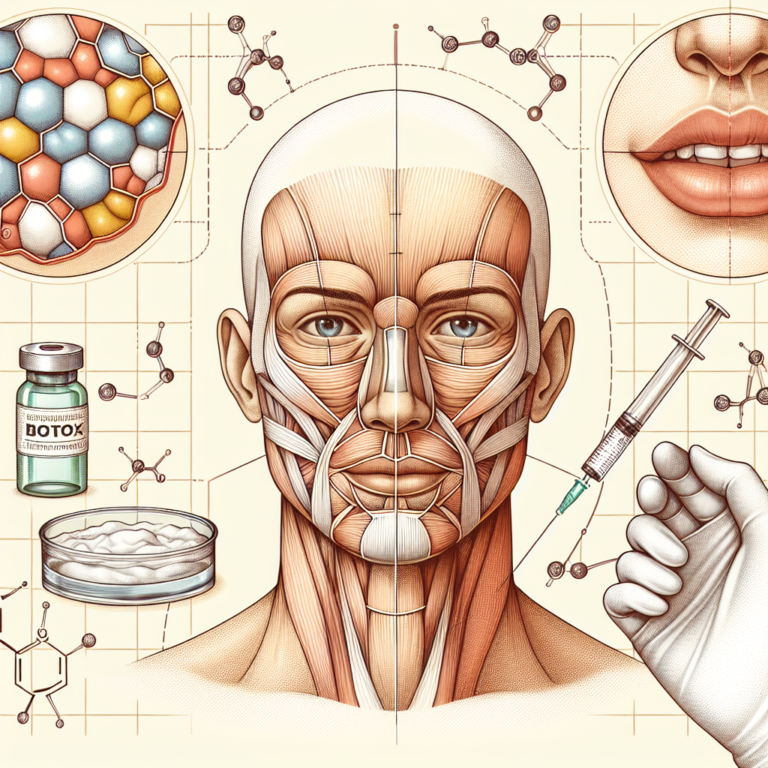Breaking Down Botox: The Science Behind Its Cosmetic and Therapeutic Applications
Botox, a substance derived from botulinum toxin type A, has become a household name since entering the cosmetic market in the early 2000s. While its popularity as a non-surgical beauty procedure is undeniable, Botox’s applications extend far beyond aesthetics, serving a range of therapeutic purposes. Understanding the science behind Botox’s functionality reveals insights into both its cosmetic allure and its diverse medical applications.
What is Botox?
Botox is the trade name for botulinum toxin type A, a neurotoxic protein produced by the bacterium Clostridium botulinum. Though this toxin is renowned for its potential to cause food poisoning, in highly diluted and controlled doses, it can be carefully harnessed for various applications. The FDA approved Botox for cosmetic use in 2002, allowing it to gain traction for its wrinkle-reducing capabilities.
The Mechanism of Action
Botox functions by blocking the transmission of nerve signals to muscles. When injected into specific facial muscles, it prevents acetylcholine from being released at the neuromuscular junction — the site where nerve cells communicate with muscles. Consequently, the targeted muscles cannot contract, leading to a temporary reduction in the appearance of fine lines and wrinkles. The results typically last between three to six months before the muscle activity gradually returns, necessitating repeat treatments.
Cosmetic Applications
1. Wrinkle Reduction
Botox is best known for its effectiveness in diminishing dynamic wrinkles, which are primarily caused by repetitive facial movements. These include frown lines between the eyebrows (glabellar lines), crow’s feet around the eyes, and forehead lines. By limiting muscle movement in these areas, Botox provides a smoother, more youthful appearance.
2. Facial Contouring
Beyond mere wrinkle reduction, Botox can also be used for facial contouring. For example, injecting Botox into the jaw muscles can slim the appearance of the face by reducing the masseter muscle hypertrophy, creating a more oval face shape.
3. Non-Surgical Brow Lift
Botox can strategically elevate a drooping brow by relaxing the muscles pulling it down while allowing others to pull it up, thus achieving a subtle brow lift without invasive surgery.
Therapeutic Applications
Botox’s utility extends far beyond cosmetic enhancements; it has been embraced in the medical field for various conditions:
1. Migraines
One of the most notable therapeutic uses of Botox is for chronic migraine prevention. Patients suffering from debilitating migraines often experience significant relief through treatment with Botox injections, which are believed to inhibit the release of neurotransmitters involved in pain transmission.
2. Muscle Spasticity
Botox has been a game-changer in managing muscle spasticity, particularly in conditions like cerebral palsy, stroke, or multiple sclerosis. By injecting the toxin into spastic muscles, physicians can reduce excessive muscle contractions, improving mobility and function.
3. Hyperhidrosis
For individuals suffering from excessive sweating (hyperhidrosis), Botox injections can significantly reduce perspiration by blocking the nerve signals responsible for activating sweat glands. This application has garnered positive outcomes in addressing sweating in the armpits, palms, and feet.
4. Overactive Bladder
Botox is also used to treat overactive bladder symptoms. By injecting the toxin into the bladder wall, it helps to relax the muscles, increasing the bladder’s capacity and reducing the frequency of involuntary contractions.
Safety and Considerations
While Botox is generally regarded as safe when administered by qualified professionals, potential side effects and risks do exist. Common side effects can include temporary bruising, pain at the injection site, headaches, and in rare cases, more serious complications such as eyelid drooping or facial asymmetry. Patients are advised to seek treatment from licensed practitioners who have received specialized training in the use of Botox to minimize risks.
The Future of Botox
Research continues to uncover new applications for Botox, from potential treatments for depression to its role in alleviating chronic pain. As innovations in cosmetic and medical science progress, Botox’s potential could expand even further, solidifying its place as an invaluable tool in both aesthetics and therapeutics.
Conclusion
Botox exemplifies how a neurotoxic protein can be transformed into a versatile treatment tool. Whether enhancing aesthetic appeal or providing relief from medical conditions, the science behind Botox reflects a remarkable intersection of biology, medicine, and artistry. As our understanding of this compound deepens and its applications broaden, Botox will likely remain at the forefront of both cosmetic enhancement and therapeutic intervention for years to come.


